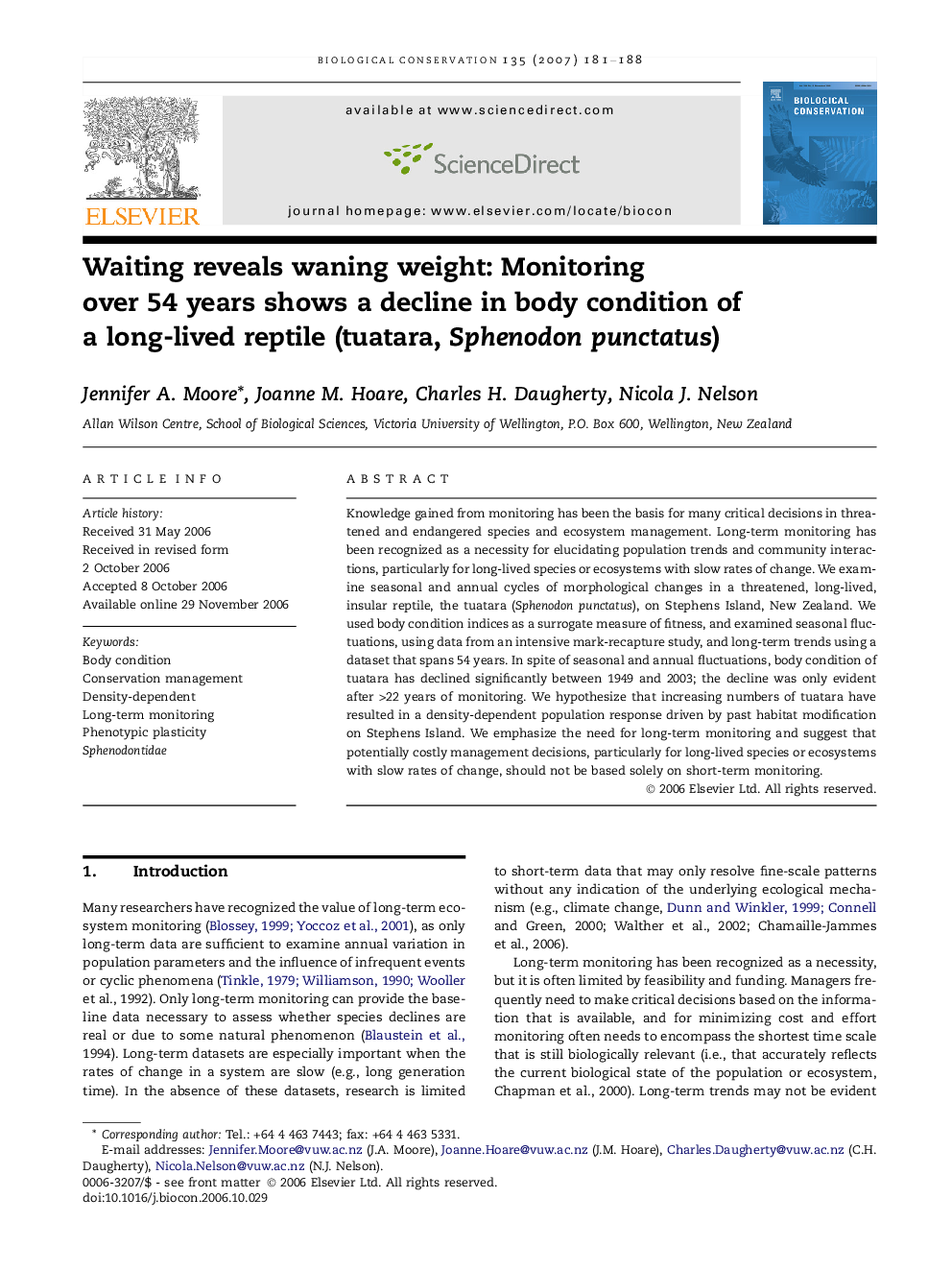| Article ID | Journal | Published Year | Pages | File Type |
|---|---|---|---|---|
| 4387294 | Biological Conservation | 2007 | 8 Pages |
Knowledge gained from monitoring has been the basis for many critical decisions in threatened and endangered species and ecosystem management. Long-term monitoring has been recognized as a necessity for elucidating population trends and community interactions, particularly for long-lived species or ecosystems with slow rates of change. We examine seasonal and annual cycles of morphological changes in a threatened, long-lived, insular reptile, the tuatara (Sphenodon punctatus), on Stephens Island, New Zealand. We used body condition indices as a surrogate measure of fitness, and examined seasonal fluctuations, using data from an intensive mark-recapture study, and long-term trends using a dataset that spans 54 years. In spite of seasonal and annual fluctuations, body condition of tuatara has declined significantly between 1949 and 2003; the decline was only evident after >22 years of monitoring. We hypothesize that increasing numbers of tuatara have resulted in a density-dependent population response driven by past habitat modification on Stephens Island. We emphasize the need for long-term monitoring and suggest that potentially costly management decisions, particularly for long-lived species or ecosystems with slow rates of change, should not be based solely on short-term monitoring.
